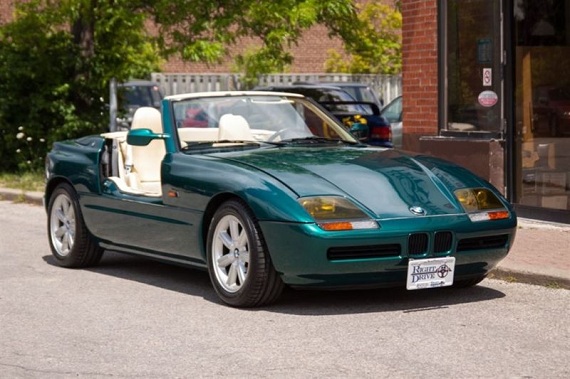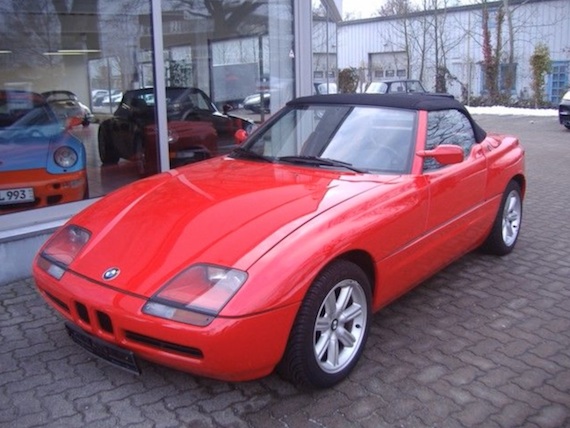For some time, BMW has dared to look ahead towards the future; in the 1970s, BMW brought turbocharging to small sedans and even the idea of an efficient supercar. In the 1980s, BMW introduced the world to an entire range of sporting products with its M division – a blueprint which certainly all German, if not most manufacturers in general, follow today. More recently, BMW has pioneered “efficient dynamics” and brought the first realistic super-performance, ultra efficient car to the market with the i8. But in the 1990s, it was a different sort of revolution. BMW looked towards new technology in both electronic systems, manufacturing, car design and construction with its revolutionary 8 series and Z1. The E31 is a car well known to these pages, but as the Z1 was never imported to the U.S., it’s not a car that we often get to feature.
The Z1 was a complete departure for BMW; while they were not strangers to small cabriolets, their previous efforts were in the 1930s with the 315/1 and the 1960s with the 700. BMW went away from the idea of an integral body and frame to a separate chassis with removable, plastic body pieces. The idea was that the owners could replace the panels themselves to “repaint” the car with minimal effort. It was something the Smart car would be notable for – a car that launched a decade following the Z1. The doors didn’t open out – the slid down into the supporting chassis structure. In front was nothing new – the venerable M20 from the E30 popped up here, too – but in the rear the Z1 was new with a multi-link rear axle of its own. This new design would later be incorporated into the E36. It’s interesting that with the Z3 BMW opted to go the opposite route and incorporate earlier E30 pieces into the rear of the /7 and /8. While performance was relatively leisurely, the Z1 nevertheless garnered praise for its innovation, unique design and great looks:

